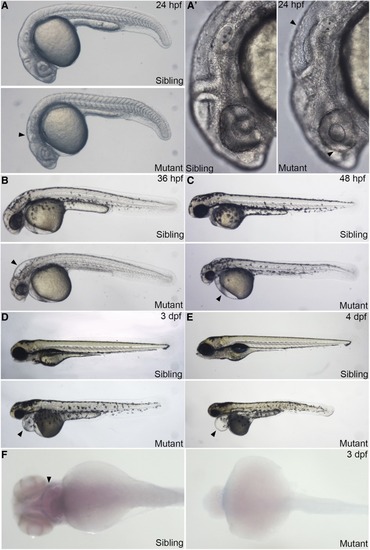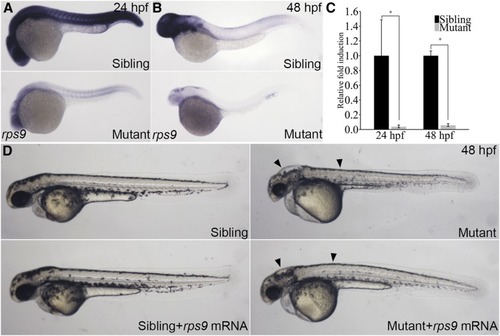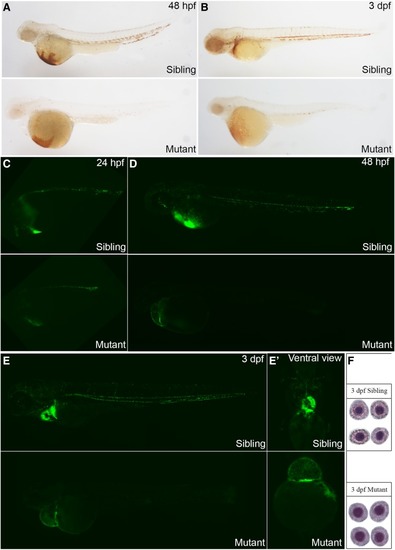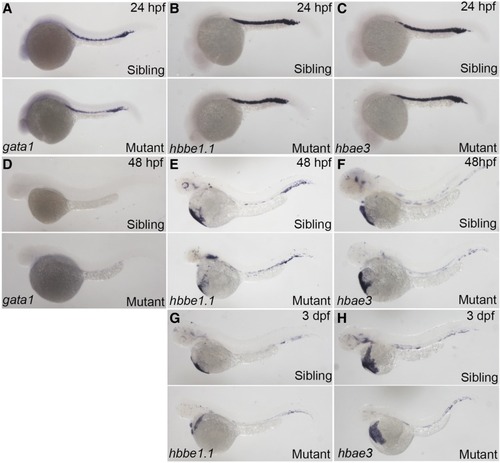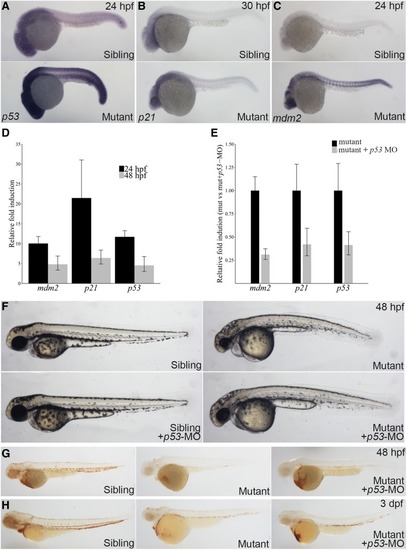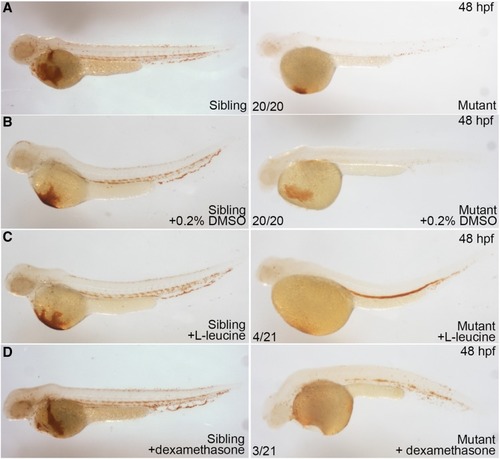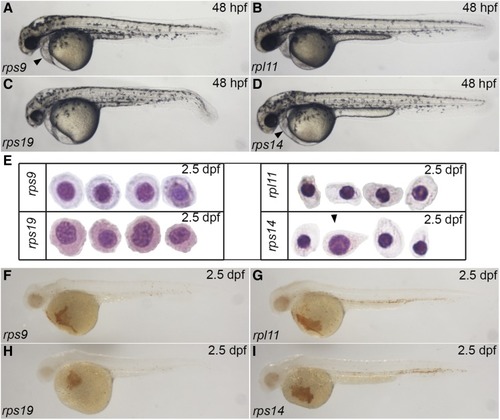- Title
-
Loss of rps9 in Zebrafish Leads to p53-Dependent Anemia
- Authors
- Chen, C., Huang, H., Yan, R., Lin, S., Qin, W.
- Source
- Full text @ G3 (Bethesda)

ZFIN is incorporating published figure images and captions as part of an ongoing project. Figures from some publications have not yet been curated, or are not available for display because of copyright restrictions. |
|
Embryos with |
|
Phenotype of |
|
Deficiency in EXPRESSION / LABELING:
PHENOTYPE:
|
|
No obvious change was seen for expression of erythroid specific markers in EXPRESSION / LABELING:
|
|
Anemic phenotype is partially rescued by |
|
Hemoglobin level is partially recovered by L-leucine, and dexamethasone treatment in PHENOTYPE:
|
|
The severity of phenotype of four ribosomal protein mutants increases in an order of |

Unillustrated author statements |

